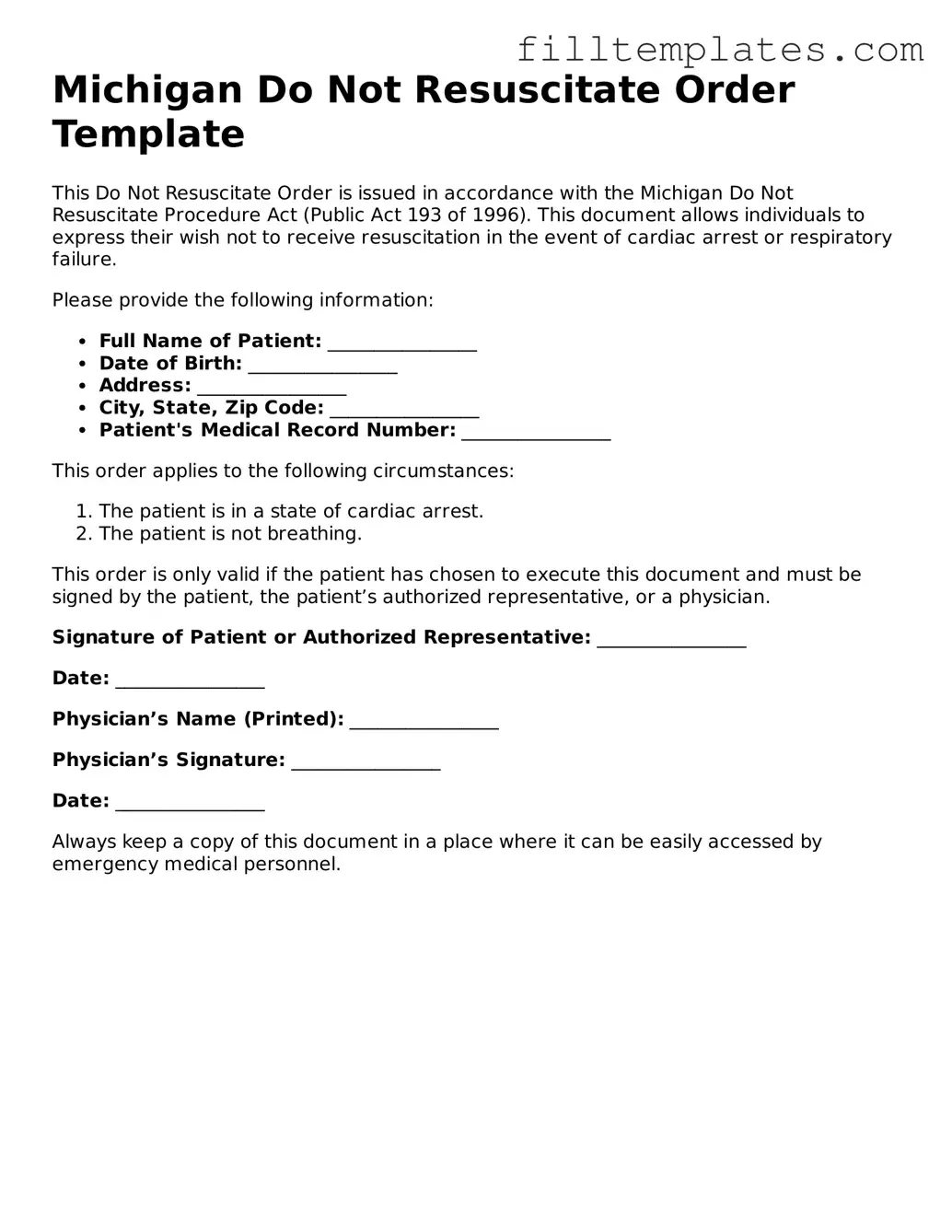Official Do Not Resuscitate Order Template for the State of Michigan
A Michigan Do Not Resuscitate Order (DNR) form is a legal document that allows individuals to express their wishes regarding medical treatment in the event of a cardiac or respiratory arrest. By completing this form, patients can ensure that they receive care aligned with their personal values and preferences. Understanding the implications of a DNR is crucial for both patients and their families as they navigate end-of-life decisions.
Open Do Not Resuscitate Order Editor
